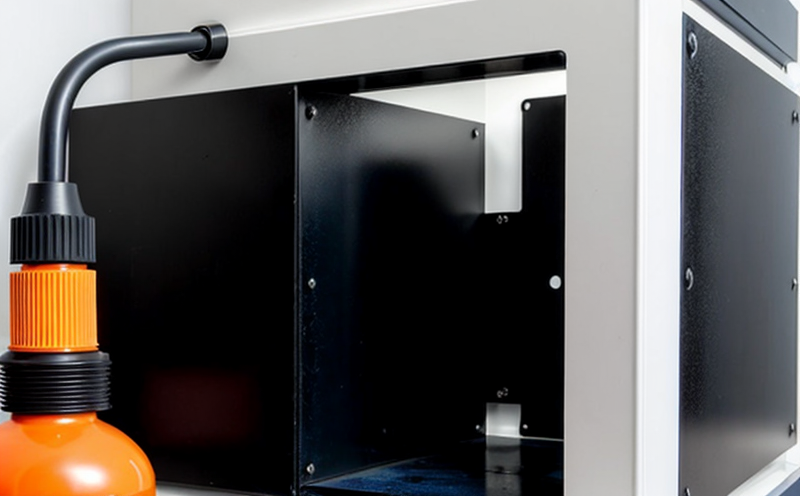OECD TG 432 In Vitro Phototoxicity Testing of Surface Treatments
The OECD Test Guideline (TG) 432 outlines a comprehensive in vitro method for assessing the phototoxic potential of surface treatments. This testing protocol is crucial for ensuring that nanocoatings and surface treatments do not cause harm when exposed to light, which can be particularly relevant in sectors such as consumer electronics, medical devices, and building materials.
The OECD TG 432 provides a standardized approach to predict the potential phototoxic effects of surface treatments on living cells. This method is widely accepted by regulatory bodies around the world, making it an essential tool for ensuring compliance with international standards.
During this testing process, samples are exposed to light under controlled conditions, and the resulting cellular response is measured. The test aims to identify any phototoxic effects that may arise from the interaction between the surface treatment and light exposure. This information is critical for product development, quality assurance, and regulatory compliance.
The protocol requires careful preparation of the specimens, including the selection of appropriate cell lines and the optimization of culture conditions. The test setup must replicate real-world environmental conditions as closely as possible to ensure accurate results. This includes controlling factors such as light intensity, wavelength, duration of exposure, and the incubation period following exposure.
The OECD TG 432 is particularly valuable for R&D engineers who are tasked with developing new surface treatments or improving existing ones. By using this method early in the development process, they can identify potential phototoxic effects before proceeding to more costly and time-consuming large-scale trials.
Compliance officers will find this service invaluable when working towards ensuring that their products meet international standards such as OECD TG 432. It provides a clear path for demonstrating compliance with regulatory requirements, which is essential in maintaining market access and consumer trust.
In addition to its role in product development and compliance, the OECD TG 432 plays a crucial part in quality assurance processes. By regularly performing this test, companies can ensure that their surface treatments consistently meet the required phototoxicity standards over time.
The testing protocol is not only relevant for nanocoatings but also extends to other types of surface treatments used across various sectors. For instance, it can be applied to medical devices where light exposure could potentially cause harm, or in building materials that may come into contact with sunlight during use.
By adhering to the OECD TG 432, companies can demonstrate their commitment to safety and quality, which is increasingly important in a competitive market. This service not only helps businesses meet regulatory requirements but also enhances their reputation as responsible and forward-thinking entities.
Applied Standards
| Standard Name | Description |
|---|---|
| OECD TG 432 | In Vitro Phototoxicity Test for Surface Treatments |
| ISO 17654-1:2019 | Photostability of Cosmetic Products - Part 1: General Requirements |
| ASTM E398 | Sunlight Exposure Test for Photostabilization of Pigments and Pigmented Surfaces |
Competitive Advantage and Market Impact
Implementing the OECD TG 432 In Vitro Phototoxicity Testing can provide significant competitive advantages for companies in several ways. Firstly, it ensures that your products meet international standards, which is increasingly becoming a requirement for market access.
By identifying and addressing potential phototoxic effects early in the development process, you can avoid costly delays and recalls later on. This proactive approach not only enhances product safety but also protects your brand reputation.
The test results can be used as part of marketing materials to highlight your commitment to quality and safety, which is particularly appealing to consumers who are increasingly aware of the potential risks associated with light exposure in consumer products.
Furthermore, compliance with this standard demonstrates your company's ability to meet regulatory requirements, which can open up new markets and opportunities for growth. In an era where regulatory compliance is becoming more stringent, having a tested and verified process can be a key differentiator.
Use Cases and Application Examples
- Consumer Electronics: Ensuring that the protective coatings on smartphones and other electronic devices do not cause harm when exposed to sunlight.
- Medical Devices: Assessing the safety of phototherapy lamps used in hospitals, which often come into direct contact with skin.
- Building Materials: Evaluating the potential risks associated with exterior paints and coatings that are exposed to prolonged sunlight.
- Military Equipment: Testing the durability and safety of coatings used on military vehicles and equipment, which may be subjected to harsh environmental conditions.





